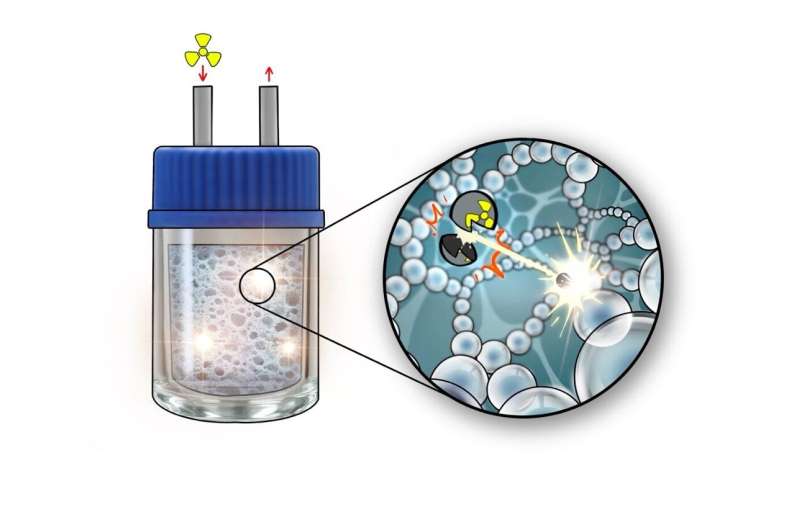Nuclear power plants: A scintillating aerogel for monitoring radioactive gas emissions
A scintillating aerogel enabling real-time measurements with excellent sensitivity to certain radioactive gases, essential to monitoring the proper functioning of nuclear power plants, has just been developed by a group of physicists, chemists, and meteorologists from the CNRS, the University Claude Bernard Lyon, the CEA, and the ENS de Lyon.
This method proposes an alternative that is both quicker and more economical than the current ones, which are often complex and costly. The research was published in the journal Nature Photonics on 2 September 2024.
Tritium (3H), krypton-85 (85Kr) and carbon-14 (14C) are among the most common radioactive gases emitted by the nuclear industry during electricity production or recycling of radioactive waste. Although these radionuclides do not present a major hazard, their accurate measurement is a key indicator for monitoring the proper functioning of nuclear power plants and preventing accidents.
However, the radionuclides are among those whose radioactive decay does not come with gamma ray emissions, they are pure beta emitters, and require specific procedures for detection and measurement. The technologies used today are based on the principles of either gas-liquid mixing or gas-gas mixing, and remain costly and complex.
Furthermore, they cannot distinguish between radionuclides quickly, they generate waste, and are not particularly effective for some of the radioactive gases under analysis.
Research carried out by scientists from the Institute of Light and Matter (ILM—CNRS/University Claude Bernard Lyon 1), the ENS de Lyon Chemistry Laboratory (LCH—CNRS/ENS de Lyon/University Claude Bernard Lyon 1) and the Henri Becquerel National Laboratory (CEA) has led to the development of a real-time detection technology based on gas-solid mixing that is both reliable and cost-effective.
It is based on synthesizing an aerogel about one centimeter thick and a few centimeters in diameter, using nanoparticles of scintillating materials about 5 nanometers in size. This composite has a highly porous structure similar to a sponge, consisting of only 15% solids, while remaining transparent.
This unique architecture allows the gas to diffuse very easily. When the gas penetrates the scintillation vial and comes into contact with the aerogel, the latter converts the energy produced by the emission of electrons during radionuclide decay into visible light. This flash of light is immediately captured by a highly sensitive detection system that can measure each photon almost instantaneously.
Fine-grained analysis of these light emissions helped develop an innovative method to distinguish and measure the pure beta emissions of different energies online, such as that of tritium and krypton-85 within the same gas sample. These discoveries were developed and confirmed both theoretically and experimentally thanks to a state-of-the-art experiment on radioactive gases.
The detection efficiency was 20% for tritium and nearly 100% for krypton. In addition, because it is not contaminated by the radioactive gases, the inorganic scintillator is reusable, thereby limiting waste, unlike other techniques.
This new approach to detecting radioactive gas has paved the way for the widespread use of sensors for monitoring civilian nuclear activities. It could be extended to other beta-emitting radionuclides that are critical for area monitoring, such as carbon-14 (14C), xenon-133 (133Xe), and argon-37 (37Ar), which would broaden its scope to include civilian, medical, and military applications.
This discovery was made as part of the European SPARTE project, and has led to several patent applications.
More information:
Raphael Marie-Luce et al, Real-time detection and discrimination of radioactive gas mixtures using nanoporous inorganic scintillators, Nature Photonics (2024). DOI: 10.1038/s41566-024-01507-x
CNRS
Citation:
Nuclear power plants: A scintillating aerogel for monitoring radioactive gas emissions (2024, September 4)
retrieved 5 September 2024
from https://techxplore.com/news/2024-09-nuclear-power-scintillating-aerogel-radioactive.html
This document is subject to copyright. Apart from any fair dealing for the purpose of private study or research, no
part may be reproduced without the written permission. The content is provided for information purposes only.

Comments are closed